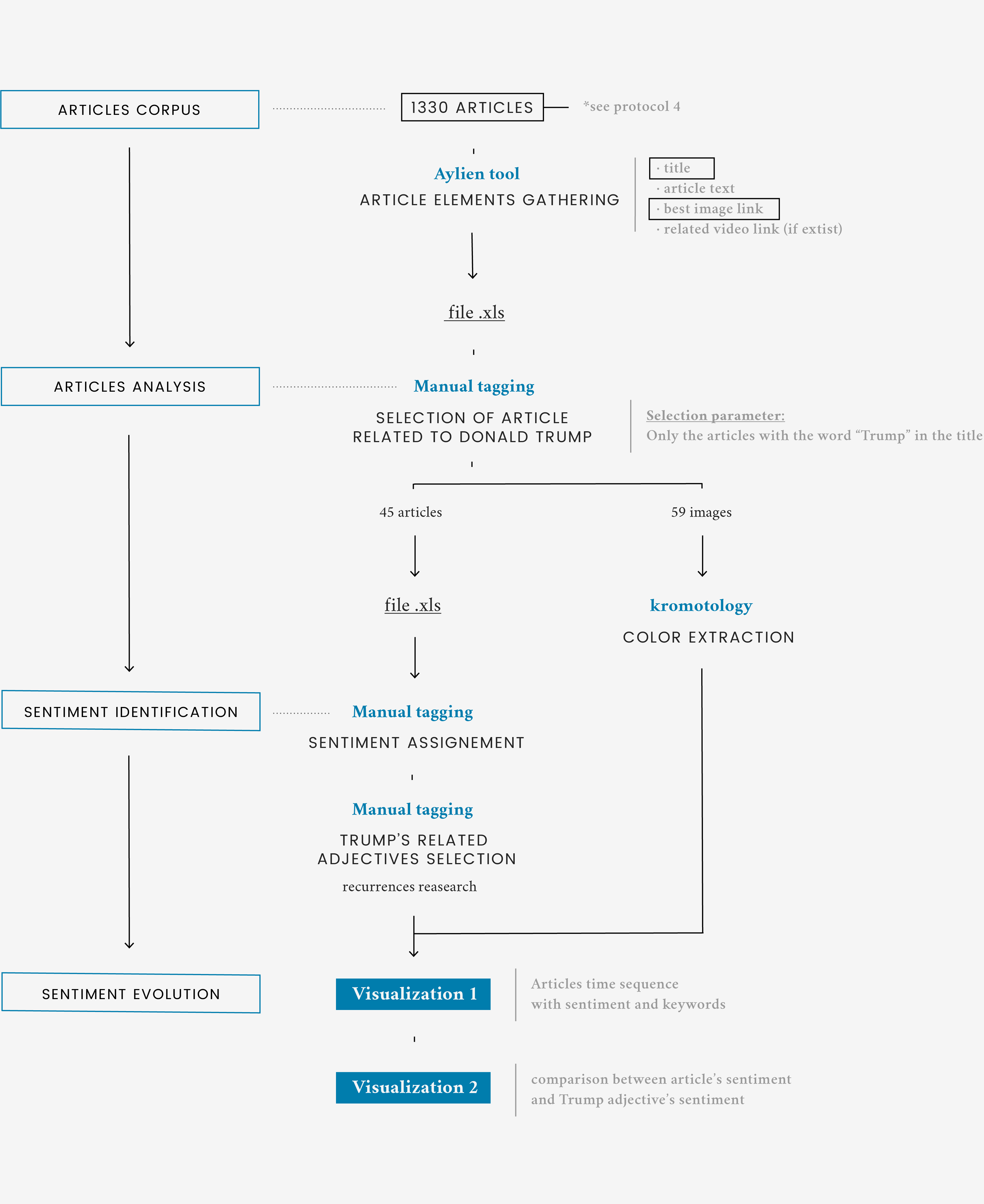Description
Among the people shown in the previous analysis, Donald Trump is one of the emerging figures. The visualization shows how Trump is presented in relation to climate change by information providers. Each square represents an article while the vertical position indicates the general sentiment of the article. Under some squares there’s a label with the adjective used by the providers to describe Trump within the single article. The colors of the label are related to the meaning of the adjective: positive, negative or neutral.
Finally, the word inside the squares shows the subject portrayed in the pictures inside the single article and clicking on it you can see the color palette of the picture.
It is clear from the visualization that the providers are more negative than positive when talking about Trump and climate change. Most of the articles have a negative or neutral tone while the adjectives used to describe him are mostly negative. This evidence is clearer from the second visualization, which better illustrates the relationship between the article sentiment and each adjective meaning.


